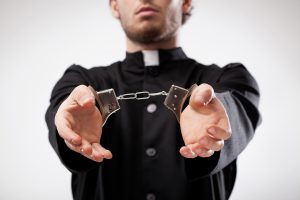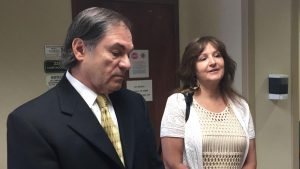
Article Title
Lake Charles Diocese knew of abuses years before listed dates; helped priests continue careers
Link to Article: https://www.theadvocate.com/acadiana/news/article_ec82f556-a8ce-11e9-8b08-7fb7c465b43c.html
Source: Acadiana Advocate
Author(s): Ben Meyers
Date: July 19, 2019
Synopsis of / Excerpts from Article
According to the article:
The Diocese of Lake Charles joined its six Louisiana counterparts three months ago in releasing a list of clergymen from its jurisdiction who have been “credibly accused” of sexually abusing minors. The lists were intended to answer nationwide public demands for accountability and transparency.
But although the Lake Charles list named predatory priests, it did so in a way that was less than transparent.
Church officials learned of the abuses of two priests, Gerard Smit and Mark Broussard, years before the dates shown on the new list, records show. The discrepancies conceal periods in which the bishop at that time, Jude Speyrer, and others were aware of allegations and helped abusers continue their pastoral careers.
Current Lake Charles church leaders say the “dates allegations received” entries reflect when victims put accusations in writing. That threshold was intended to ensure a consistent standard and not to deceive the public, church officials told The Advocate. But it also overlooks clear evidence that the bishop and others knew of abuses and failed to act.
Speyrer, for example, acknowledged in a 1986 letter that he had recently received a complaint that Smit “had been involved in some improper fondling of some small girls about twenty years ago” — in the mid-1960s, in other words — and that Smit did not deny it.
So Speyrer sent Smit to a Catholic-run psychological treatment center in Jemez Springs, New Mexico, and then referred Smit to the Diocese of Wilmington, Delaware, the next year “in good standing.”
Nonetheless, the diocese’s list says it first received allegations against Smit in 2002, making no mention of the allegations Speyrer received 16 years earlier.
In 1988, two years after Smit was treated in New Mexico, Broussard, the other of the two priests, was shipped to the same facility. That’s the year Broussard has said repeatedly that he admitted his abuses to diocesan officials.
However, the new diocesan list says church officials first received allegations against Broussard in 1994, six years after he was sent away for treatment. During that six-year span, Broussard worked as a Lake Charles hospital chaplain and as pastor at St. Eugene Church in Grand Chenier.
Allegations later surfaced that Broussard abused children in both of those assignments.
Smit and Broussard had been exposed as abusers long before the diocese released its list. Smit has never faced criminal prosecution, but the Diocese of Wilmington identified him on its list of credibly accused clergymen in 2006. Smit landed on the Wilmington list after a man told the diocese that Smit had abused him at St. Anne Church in Youngsville in the early 1960s.
Broussard, meanwhile, was convicted by a Calcasieu Parish jury in 2016 of five counts related to sexually assaulting minors, and he is now serving two life terms plus 55 years at the Louisiana State Penitentiary at Angola.
However, the men who knew about their abuse and allowed them to continue in the ministry have not faced the same public scrutiny. In addition to Speyrer, they include the Rev. Henry Mancuso, a well-known retired priest who comes from a prominent Lake Charles family. Mancuso arranged for Broussard to work as a hospital chaplain after Broussard disclosed to Mancuso in 1988 that he had abused several children, according to Broussard’s statements to church officials a decade later.
Mancuso, reached by telephone, refused to discuss his 1988 conversation with Broussard, though he did acknowledge trying to help the predatory priest.
“I did whatever I could do to help him move beyond his time at the place in New Mexico,” Mancuso said by telephone.
Asked if that had allowed Broussard to continue abusing children, Mancuso said he didn’t know. The Broussard case is “old history,” Mancuso said before hanging up.


